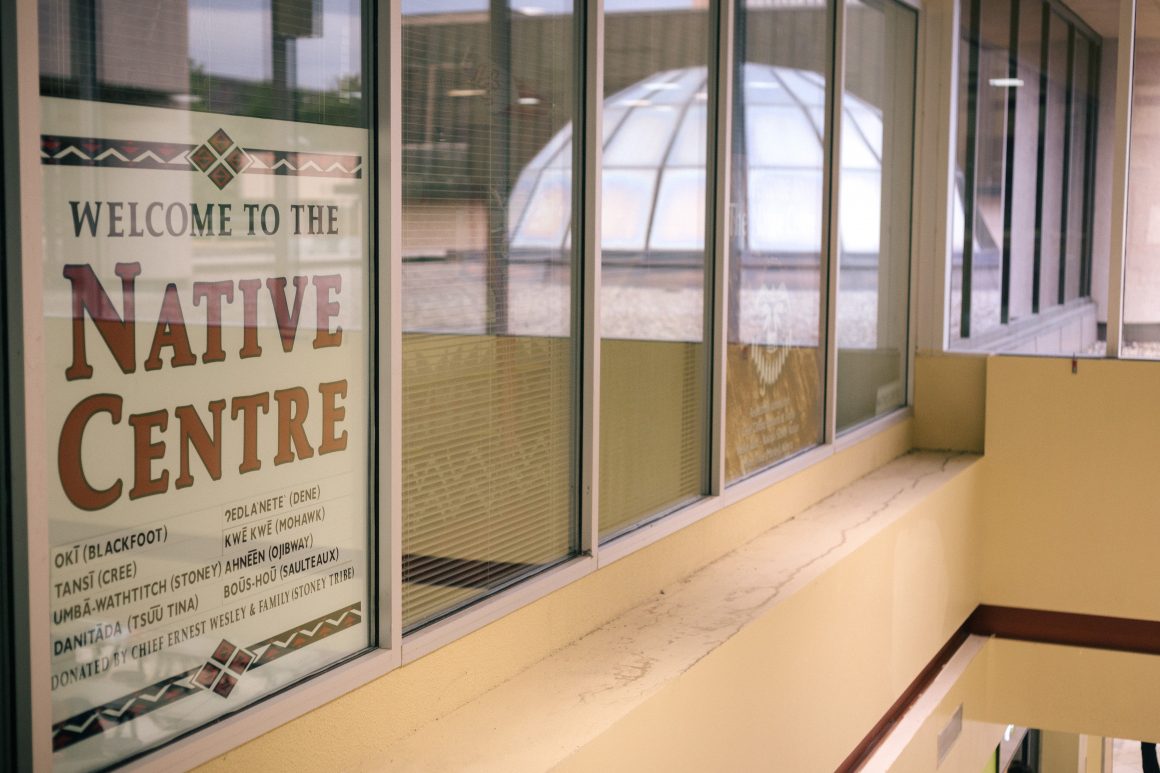
First Nation, Métis and Inuit student enrolment up 17.4 per cent at the University of Calgary
By Saima Asad, November 14 2016 —
According to the University of Calgary registrar’s office, First Nations, Métis and Inuit (FNMI) student enrolment is up 17.4 per cent this year at the U of C.
Self-declared FNMI students make up 675 of the roughly 32,000 students at the U of C, totalling about 2.11 per cent of the 2016–17 student population. This is an increase from last year, when 575 self-reported indigenous students were enrolled at the U of C.
U of C vice-provost student experience Susan Barker said there are many reasons for the increase in FNMI students.
“We’ve had an indigenous recruiter for some time now and she has built up some really outstanding relationships with schools with large numbers of indigenous students,” Barker said. “She’s also built up relationships with schools in reserves in the Calgary area. I think when you build up relationships over time, this really builds up trust and builds up the U of C as a place for these students to apply to.”
Other reasons Barker cited were an increase in the number of FNMI faculty members at the U of C and a higher number of scholarships available for indigenous students.
“Certainly over time, I think this is going to have much more of an impact when indigenous students see indigenous faculty they can identify with,” Barker said. “Lastly, the Alberta government instituted a number of scholarships for indigenous students and I think this is also great in regards to attracting students to post-secondary programs.”
Tessa Bailey has been the U of C’s indigenous student recruiter since March 2015. A member of the Tlingit people of the northwest coast, Bailey calls the position “more than just a job” and believes education is the key to success for indigenous people.
“With the [U of C’s] indigenization strategy, having all that input is really going to help bring more students to campus. I think in general there will be increases happening,” Bailey said.
The U of C is currently developing a campus-wide indigenous strategy, set to be announced this spring.
Bailey said a challenge she faces as the U of C’s indigenous student recruiter is the widespread area she has to cover, which spans Alberta, northern British Columbia, northern Saskatchewan, the Territories and even Alaska.
She said a barrier to increasing indigenous student enrolment in Canadian universities is the persistence of colonial attitudes.
“It’s starting to change, but we [still] infer within our culture that we’re inferior and must be dominated,” Bailey said.
Bailey also said a lack of learning resources in schools on reserves can impede some FNMI students’ opportunities for academic success. She mentioned how schools on reserves often receive significantly less funding than public schools.
“Some of the [reserve] schools are sharing one textbook for an entire class and teachers are photocopying everyday, so it’s not really on the students,” Bailey said
The U of C has an Aboriginal Admission Process to ease the admission standards of students who do not meet regular enrolment requirements.
The population of indigenous peoples in Calgary also increased recently. According to a City of Calgary survey from 2010, the city’s indigenous population grew by 75 per cent between 1996 and 2006, with 46 per cent of these individuals being under the age of 25.
